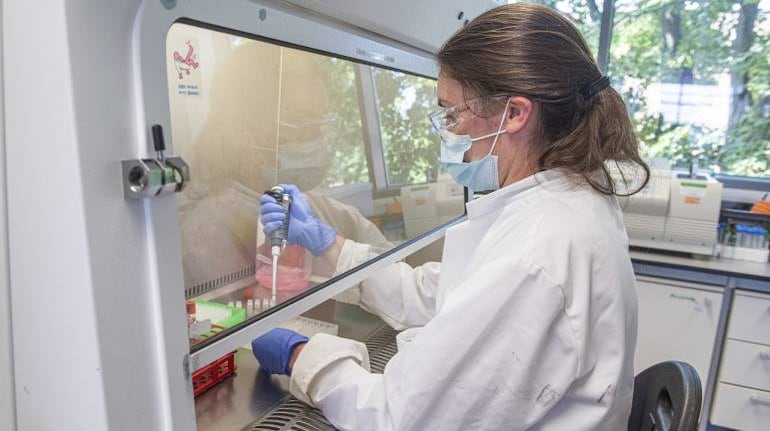



Scientists have developed a new method for identifying single virus particles based on changes in electrical current when they pass through ultrasmall pores, an advance which they claim may lead to new rapid COVID-19 tests.
The study, published in the journal ACS Sensors, demonstrated a new system for identifying single virus particles using an algorithm trained to detect changes in the current passing across silicon nanopores.
According to the scientists, including those from Osaka University in Japan, the work may lead to fast and accurate screening tests for diseases like COVID-19 and influenza.
In the new method, the scientists said a layer of the compound silicon nitride just 50 nanometres (nm) thick has tiny nanopores added.
Follow our LIVE blog for the latest updates of the novel coronavirus pandemic
The layer is suspended on a silicon wafer, they said, adding that when a voltage difference is applied to the solution on either side of the wafer, ions travel through the nanopores in a process called electrophoresis.
According to the study, the motion of the ions can be monitored by the current they generate, and when a viral particle enters a nanopore, it blocks some of the ions from passing through, leading to a transient dip in current.
Each dip reflects the physical properties of the particle, such as volume, surface charge, and shape, the scientists said, adding that this measure can be used to identify the kind of virus. Using artificial intelligence (AI), the research team built a classification algorithm trained with signals from known viruses to determine the identity of new samples.
Using artificial intelligence (AI), the research team built a classification algorithm trained with signals from known viruses to determine the identity of new samples.
The scientists said the computer can discriminate the differences in electrical current waveforms that cannot be identified by human eyes, which enables highly accurate virus classification.
In addition to coronavirus, they said the system was tested with pathogens such as adenovirus, influenza A, and influenza B. In addition to coronavirus, they said the system was tested with pathogens such as adenovirus, influenza A, and influenza B.
"By combining single-particle nanopore sensing with AI, we were able to achieve highly accurate identification of multiple viral species,” explained study senior author Makusu Tsutsui from Osaka University.
The researchers believe coronaviruses are especially well suited for this technique since their spiky outer proteins may even allow different strains to be classified separately.
"This work will help with the development of a virus test kit that outperforms conventional viral inspection methods,” said Tomoji Kawai, another co-author of the study.
Compared with other rapid tests like PCR or antibody-based screens, the researchers said the new method is much faster and does not require costly reagents.
Compared with other rapid tests like PCR or antibody-based screens, the researchers said the new method is much faster and does not require costly reagents.
They believe the new technique may lead to improved diagnostic tests for emerging viruses that cause infectious diseases such as COVID-19.
Follow our full coverage of the coronavirus pandemic here.
Discover the latest Business News, Sensex, and Nifty updates. Obtain Personal Finance insights, tax queries, and expert opinions on Moneycontrol or download the Moneycontrol App to stay updated!
Find the best of Al News in one place, specially curated for you every weekend.
Stay on top of the latest tech trends and biggest startup news.